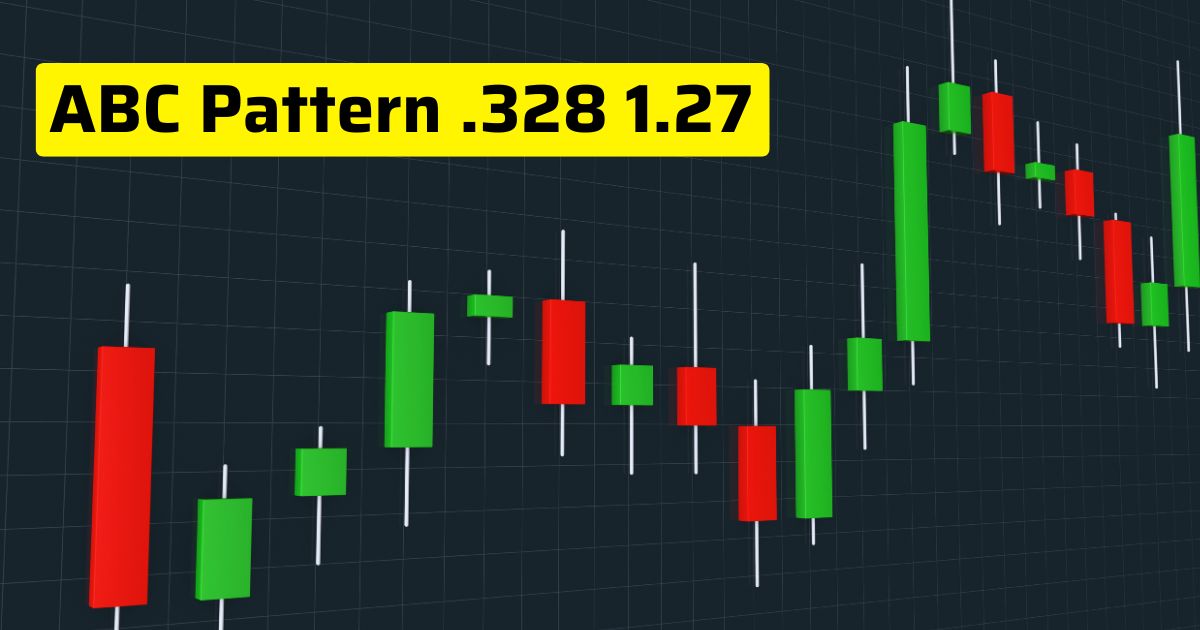In technical analysis, the ABC Pattern .328 1.27 is a key tool for predicting price movements. When combined with Fibonacci ratios like .328 and 1.27, it becomes even more powerful. The ABC Pattern .328 1.27 consists of three waves—A, B, and C—that represent corrective movements against a prevailing trend. This pattern can signal either a market reversal or continuation.
Fibonacci ratios are derived from a mathematical sequence that traders use to find support and resistance levels. The .328 and 1.27 levels are particularly useful for identifying potential entry and exit points. Understanding these ratios within the ABC pattern gives traders the tools to make more informed decisions. Together, they provide a roadmap for anticipating market shifts.
The Basics of Fibonacci Ratios and Their Role in Trading
Fibonacci ratios form the backbone of many trading strategies. The Fibonacci sequence is a series of numbers where each number is the sum of the previous two. From this, key ratios are derived: 23.6%, 38.2%, 50%, 61.8%, and 100%. These ratios help traders predict market movements by showing where price corrections may occur.
The .328 Fibonacci ratio is used to measure shallow pullbacks. It signals that the market may continue in the original direction after a small correction. The 1.27 Fibonacci extension indicates a potential target beyond the previous price levels. By combining these ratios with the ABC pattern, traders can make more precise predictions about price reversals or extensions.
Understanding the ABC Pattern Structure
The ABC pattern consists of three waves: A, B, and C. Wave A typically represents the initial movement in the direction of the prevailing trend. Following this, wave B serves as a corrective move, retracing a portion of wave A. Finally, wave C completes the pattern, often extending beyond the length of wave A.
Traders look for this three-wave pattern to identify potential reversal points. The ABC pattern is often seen in both uptrends and downtrends. Its structure is simple but powerful, providing a clear indication of price action. Understanding these waves helps traders spot trading opportunities and make more informed decisions.
Also Read: Desmontar Techo Volvo XR70
How Fibonacci Ratios .328 and 1.27 Fit into the ABC Pattern
Fibonacci ratios enhance the ABC pattern by providing key levels for entry and exit points. The .328 Fibonacci level is typically applied to wave B. If the price retraces by around 32.8% of wave A, it suggests that the correction may be shallow and the trend could continue.
The 1.27 Fibonacci level is often used for wave C. It helps project where wave C may end, extending 27% beyond the end of wave A. Traders can use these levels to identify potential support and resistance areas, making it easier to predict where the market may reverse or break out. Together, these Fibonacci ratios refine the ABC pattern and offer greater accuracy in trade predictions.
Step-by-Step Guide to Identifying the ABC Pattern .328 1.27
Identifying the ABC pattern is easier with the help of Fibonacci levels. Follow these steps to spot the pattern:
- Identify Wave A: Look for an initial price movement in the market. This movement forms wave A, which sets the direction of the trend.
- Apply Fibonacci Retracement: Use the Fibonacci retracement tool on wave A. Focus on the .328 level to check for a shallow correction in wave B.
- Identify Wave B: Wave B is the corrective wave. It should not retrace too much of wave A. Watch for signs of a reversal after wave B ends.
- Apply Fibonacci Extension: Use the Fibonacci extension tool on wave B, targeting the 1.27 level. This projects the possible end of wave C.
- Confirm the Pattern: As wave C forms, confirm that it aligns with your Fibonacci extension. Once wave C hits the 1.27 level, you may consider entering the trade.
By following these steps, you can more easily spot the ABC pattern and make well-informed trading decisions.
Common Mistakes to Avoid When Using the ABC Pattern .328 1.27
Traders often make mistakes when analyzing the ABC pattern. One common error is misidentifying the waves. For example, confusing wave B with wave C can lead to incorrect predictions. Wave B should not retrace too much of wave A. If it does, the pattern is invalid.
Another mistake is not considering market conditions. External factors, such as news or major events, can disrupt the ABC pattern. Relying solely on the pattern without understanding the broader market context can lead to losses. Additionally, some traders fail to manage their risk properly. Setting stop-loss levels and using a favorable risk-reward ratio are crucial steps that should not be overlooked.
The ABC Pattern .328 1.27 in Trend Reversal Trading
The ABC pattern is especially effective for trend reversal trading. It helps identify when the market is likely to change direction. By applying the .328 Fibonacci retracement level, traders can gauge whether wave B is a shallow correction. If wave B is followed by wave C, reaching the 1.27 Fibonacci extension, the reversal is likely to be complete.
For example, in an uptrend, the ABC pattern could signal a reversal to the downside. In a downtrend, the pattern may indicate a shift to the upside. By using the ABC pattern in conjunction with Fibonacci levels, traders can time their entries and exits with greater precision.
How to Use the ABC Pattern .328 1.27 for Risk Management
Risk management is a key part of successful trading. The ABC pattern with Fibonacci ratios can help you manage your risk more effectively. For wave B, set a stop-loss just below the .328 Fibonacci level. This protects you if the price moves against your position.
The 1.27 Fibonacci extension for wave C provides a natural target for taking profits. By setting your take-profit level at this extension, you can secure gains at key price levels. Additionally, the ABC pattern allows you to refine your risk-reward ratio. By planning your stop-loss and take-profit points based on Fibonacci levels, you can ensure a better balance between risk and reward.
Advanced Strategies: Combining the ABC Pattern .328 1.27 with Other Indicators
Advanced traders often combine the ABC pattern with other technical indicators to improve their trading strategy. For example, the Relative Strength Index (RSI) can help confirm whether the market is overbought or oversold. If the ABC pattern forms at an overbought or oversold level, the reversal may be more likely.
Other indicators, like Moving Average Convergence Divergence (MACD), can also provide additional confirmation. If the MACD signals a bullish or bearish crossover while the ABC pattern forms, it adds strength to the trade. Combining these tools with the ABC pattern and Fibonacci ratios creates a more comprehensive trading strategy, improving the likelihood of success.
Conclusion
Mastering the ABC Pattern .328 1.27 and Fibonacci ratios is an effective way to improve your trading skills. The ABC Pattern .328 1.27 provides a clear structure for identifying market reversals, while Fibonacci ratios offer precise levels for entry and exit. By combining these tools, you can better predict price movements and increase your chances of success.
Successful trading requires practice, patience, and a solid understanding of market dynamics. By continuously refining your skills in recognizing the ABC pattern and using Fibonacci ratios, you can develop a more effective trading strategy. With time and experience, you’ll be able to unlock the full potential of these tools and make more profitable trades.










